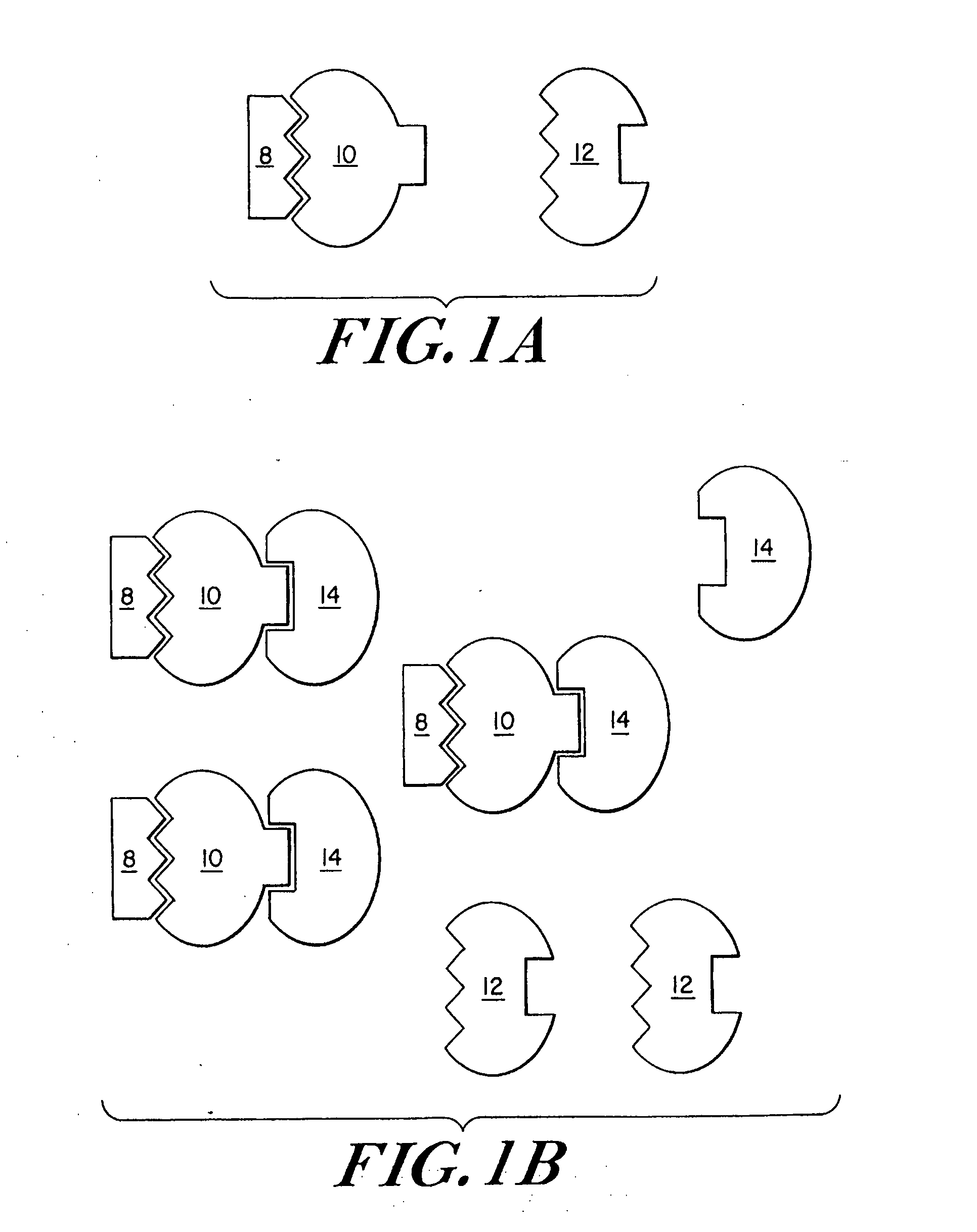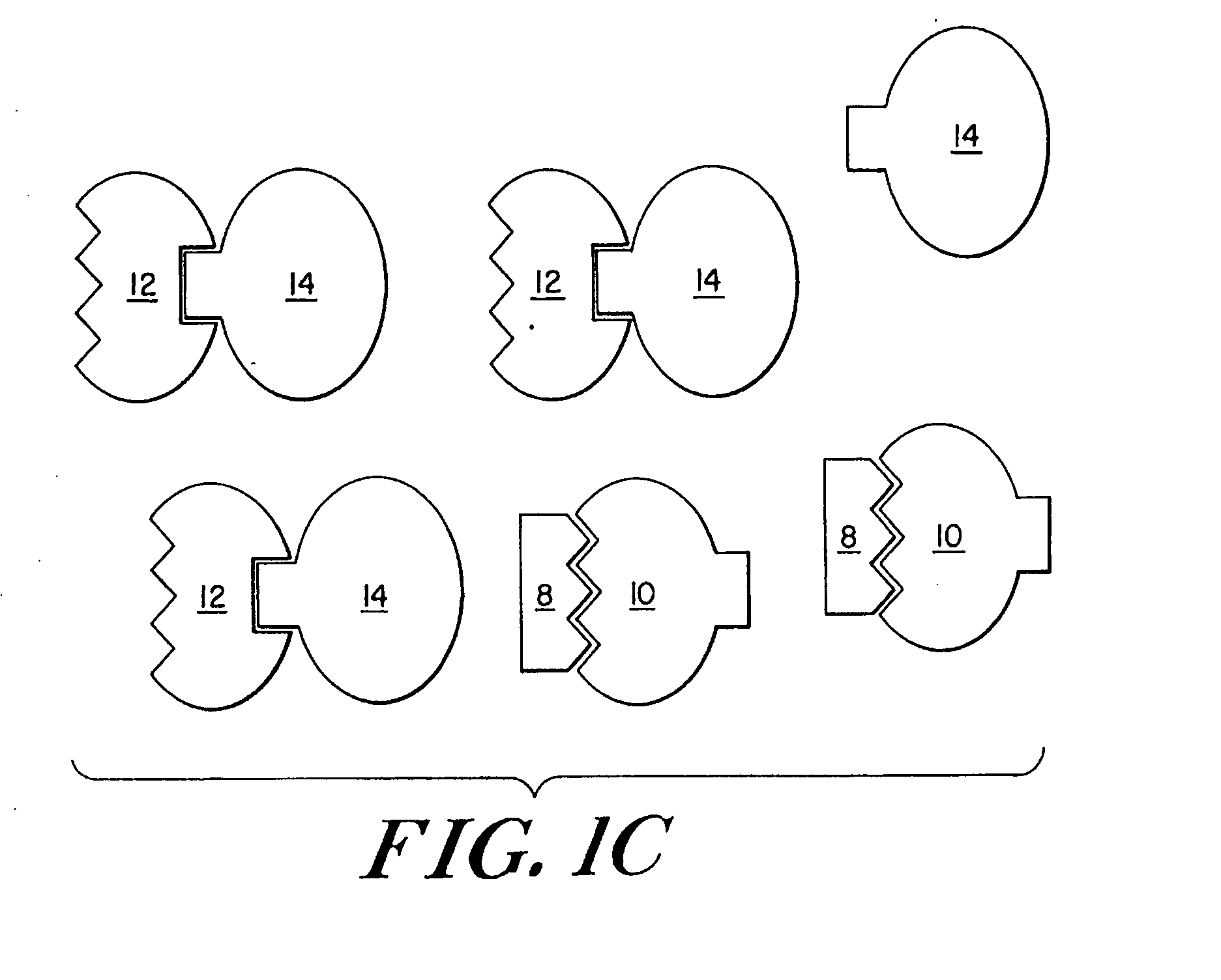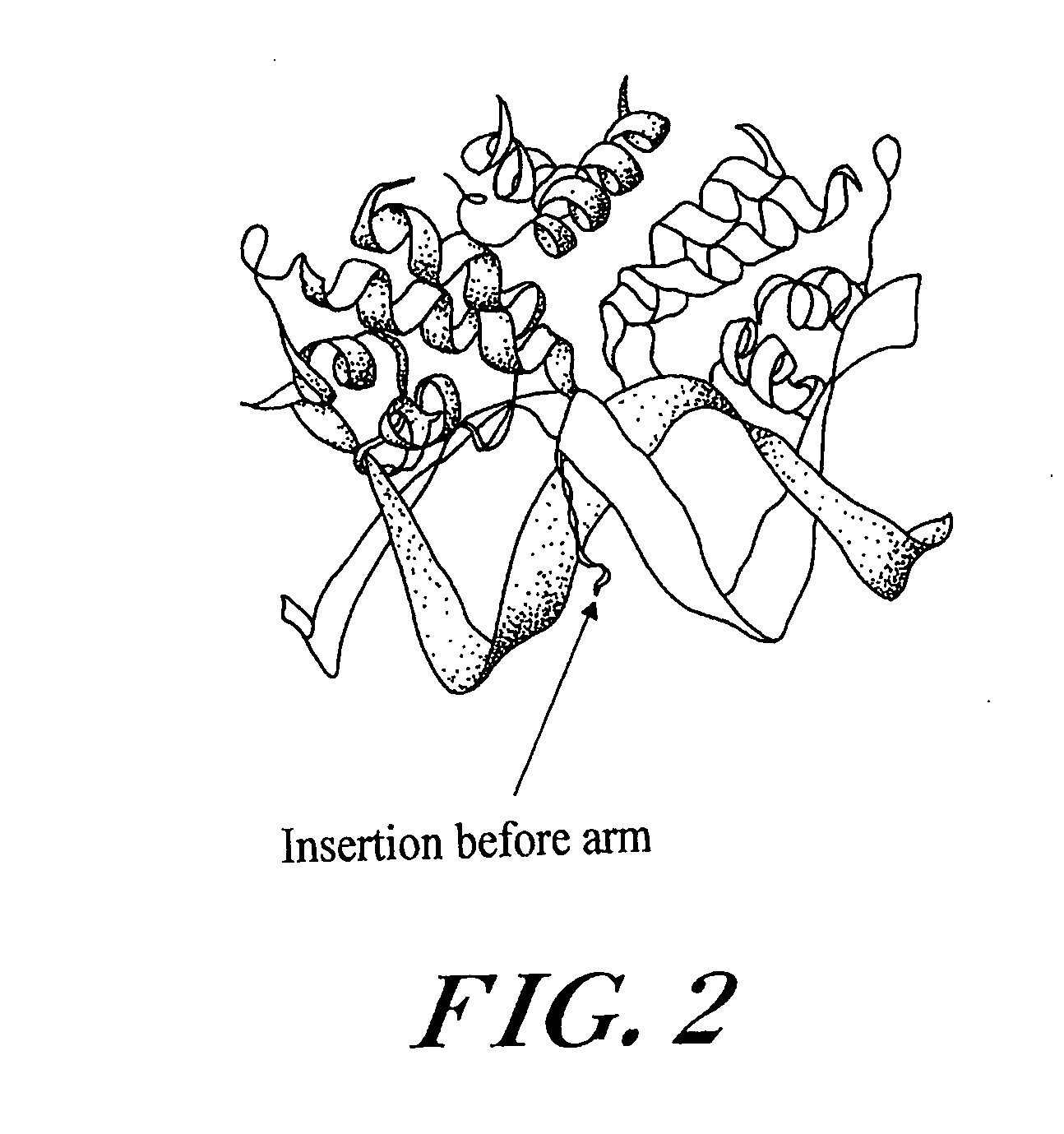Engineered stimulus-responsive switches
a stimulus-responsive switch and stimulus technology, applied in the field of engineered stimulus-responsive switches, can solve the problems of limited possibilities, achieve the effects of reducing danger, reducing viability or fecundity of malignant cells, and facilitating the application of pharmacogenomics
- Summary
- Abstract
- Description
- Claims
- Application Information
AI Technical Summary
Benefits of technology
Problems solved by technology
Method used
Image
Examples
example
Design of a Taxol-Responsive Transcriptional Switch
[0215] Phage display experiments performed with biotinylated-taxol led to the identification of short peptides that exhibited homology to a 60 amino acid section of the Bcl2 protein (Rodi et al., J. Mol. Biol. 285:197-203). These 60 amino acids are predicted to be in a disordered loop of Bcl2. It has been demonstrated that taxol specifically bound to GST-Bcl2 with a Kd in the nanomolar range. The binding activity was further narrowed down to a 30 amino acid stretch (Rodi et al. J. Mol. Biol. 285, 197-203). Based on these studies, a 12-amino-acid-stretch from Bcl2 protein with extensive homology to the peptides identified by phage display was selected as the taxol binding domain (TBD).
[0216] Creation of Lambda Repressor Derivatives
[0217] It has been shown that the carboxy-terminal domain of lambda repressor (amino acids 133-236) can be substituted by dimerization domains from related repressors, as well as the unrelated leucine zi...
PUM
| Property | Measurement | Unit |
|---|---|---|
| Length | aaaaa | aaaaa |
| Structure | aaaaa | aaaaa |
Abstract
Description
Claims
Application Information
 Login to View More
Login to View More - R&D
- Intellectual Property
- Life Sciences
- Materials
- Tech Scout
- Unparalleled Data Quality
- Higher Quality Content
- 60% Fewer Hallucinations
Browse by: Latest US Patents, China's latest patents, Technical Efficacy Thesaurus, Application Domain, Technology Topic, Popular Technical Reports.
© 2025 PatSnap. All rights reserved.Legal|Privacy policy|Modern Slavery Act Transparency Statement|Sitemap|About US| Contact US: help@patsnap.com



